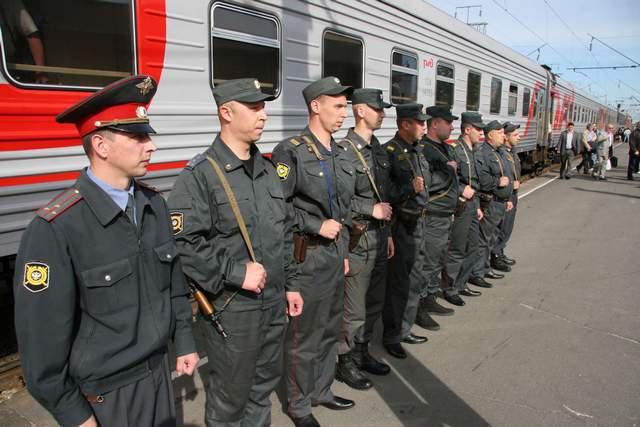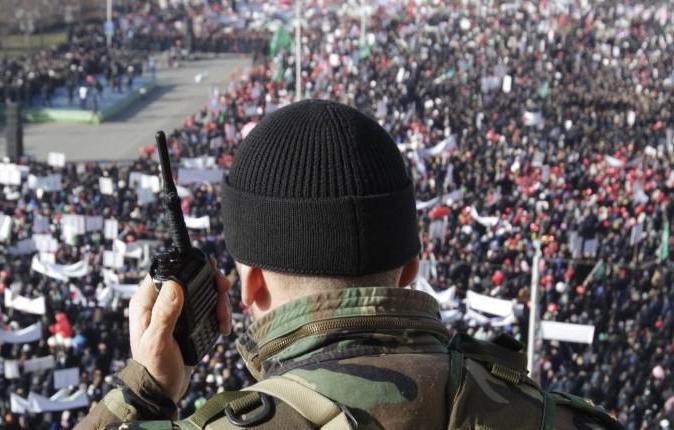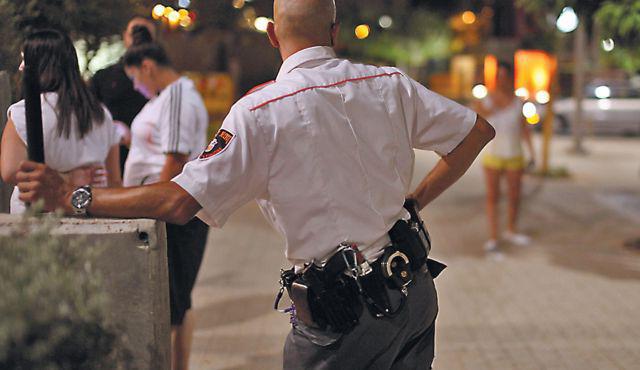In the generally accepted sense, a weapon is a device that is technically suitable for defense or attack, as well as the destruction of various obstacles and manpower. In the forensic field, these tools are designed to target the target. Their turnover is regulated by law. 
Legal aspect
A large number of various weapons requires the introduction of strict rules for its circulation. This need is reflected in the relevant law of November 13, 1996. This regulatory act examines the existing types of weapons. They differ in their functional purpose. The rules by which service and civilian weapons are used are established not only in this law. Its turnover is also regulated by a number of other special regulatory acts. The use of military weapons, ammunition and ammunition is established by government regulations. Consider these categories in detail.
Civil weapon
This category includes:
- Means of self-defense. These include smoothbore or barrelless firearms, gas (spray guns, revolvers, pistols, etc.) weapons with gas cartridges (with irritating or tear compounds), traumatic and light and sound effects. These funds are allowed for use by the Ministry of Health of the Russian Federation. Electroshock devices, spark gaps are also included in this category. Their parameters are determined in accordance with state standards.
- Sports weapon. It can be a gunshot with a rifled barrel, cold bladed, smoothbore, pneumatic with a muzzle energy of more than 3 J, propelling.
- Hunting weapon. It can be a rifled gunshot, smoothbore, including having a rifled portion length of not more than 140 mm, combined (with insert and replaceable barrels), pneumatic with muzzle energy not exceeding 25 J, cold bladed.
- Signal weapon.
- Tools designed to be worn with some costumes of the peoples of the Russian Federation and with the Cossack uniform.
Service and combat weapons
These items are used by a certain category of subjects. They vary in size and type of cartridges. Service weapons exclude firing bursts. The volume of the magazine (drum) should not be more than ten rounds. In this case, the cores of bullets should not consist of solid materials. The category of service includes long and short-barreled (rifled and smooth-bore) weapons, the muzzle energy of which is not more than 300 J. It is used by officials of state bodies and employees of legal entities in accordance with the law. Combat is considered a cold and hand small arms. It is used in combat and operational tasks. Adopted in accordance with government regulations. The subjects entitled to carry such weapons include employees:
- FSNP.
- FSO.
- Ministry of Internal Affairs.
- SVR.
- FSB.
- Ministry of Defense.
- Frontier service.
- Troops GO.
- State Customs Committee.
- Federal Railway Service.
- State courier service.
- Federal Agency for Information and Government Communications.

Appointment
Service weapons shall be issued to authorized officials for self-defense or for the performance of duties to ensure the protection of the health and life of people, property, natural resources, special correspondence, dangerous and valuable cargo. These functions are assigned to such employees by federal law.Authorized persons are issued a permit for service weapons in the manner prescribed by regulatory enactments.
Bans
The use of service weapons is allowed in strict accordance with the requirements of the law. Ignoring regulations is considered a crime. In particular, it is forbidden to use:
- As an official weapon of limited destruction, the muzzle energy of which is more than 150 J.
- Devices, drum (magazine) capacity in which more than 10 rounds.
- Means of destruction, the length of the barrel or receiver of which is less than 500 mm, and the total length is less than 800 mm. These include, but not limited to, devices whose design may vary. In particular, as an official weapon, weapons whose barrel length can be made less than 800 mm cannot be used without prejudice to the possibility of firing a shot.
- Devices for defeat, having a form different from that generally accepted in the standard.
- Long-barreled firearms made under cartridges for rifled barrels.
Other restrictions
It is forbidden to use types of service weapons with tracer, explosive, incendiary, armor-piercing bullets. The operation of cartridges and weapons, the technical characteristics of which do not meet the criminalistic standards and requirements of the executive federal authority, is not allowed. The use of service weapons with devices for silent shooting and night vision sights is prohibited.
Turnover restrictions
Individuals are forbidden to wear weapons at rallies, street processions, pickets, demonstrations and other public mass events. The exception is the entities authorized by the organizers to ensure public order and people's safety, compliance with the law during such actions. The transfer, sale, purchase of service weapons and their ammunition, made exclusively for export under technical specifications that meet the requirements of importing states, is not allowed.
Additionally
Russian service weapons, as well as the cartridges used with them, must comply with forensic standards and requirements. They, as mentioned above, are established by the executive body of the federal government. This structure performs the functions of developing and implementing state policy and legal regulation in the field of internal affairs. The specified norms and requirements must be agreed with the executive body that provides public services, managing state property in the field of metrology and technical regulation.
Models
The list is in the State Cadastre. The following models are considered service weapons:
- OTs-21S.
- RG-1.
- Revolver R-92, as well as its modifications.
- P-96S "Efa".
- OTs-01s "Cobalt".
- IZH-71 (analog of Makarov pistol).
- PKSK-10.
- The Boar.
- "Saiga".
- "Bekas-M".
- MR-153C and others.

Getting
Russian service weapons to authorized persons shall be issued in the manner prescribed by law. They must be employees of the relevant organizations. The legislation in force in the Russian Federation allows these institutions to carry, use and store service weapons. Officials of such organizations should submit a statement. Attached to it:
- Copy of the order (order) of the head of the institution. With this document, service weapons are assigned to a specific employee. It also indicates the list of workers to whom it is transferred.
- Medical report. An organization employee must undergo a medical examination. In conclusion, there should be no contraindications to the use of weapons. In particular, the employee should not have vision problems, mental illness, he should not suffer from drug addiction or alcoholism.
- 2 photographs 3 x 4 cm.
Important point
A person who is not an official cannot receive official weapons. The license is issued exclusively to authorized institutions. It is such organizations that can buy, store, transport means of destruction. In this regard, the staff of such institutions, in fact, are not concerned about the issue of turnover of weapons. Most of the responsibility lies with the employer. However, employees must comply with statutory rules for carrying and using weapons.
Private security companies
Service weapons for private security companies are currently issued in accordance with the order of the Minister of Internal Affairs of the Russian Federation. This document was adopted to ensure the implementation of regulations that established a new procedure for the activities of security companies. State power in early 2012 significantly increased control over them. At that time, the total staff of such organizations totaled more than 600 thousand people. At the same time, about a third of them carried service weapons. Strict requirements were introduced for private security companies in connection with the exacerbation of the criminal situation. The fact is that in the states of security companies there were not only former security officials, police, and military. Often, such organizations consisted of criminal authorities. With a security certificate, they could carry weapons with them without hindrance. In addition, according to statistics, cases of theft and loss of gunshots have become quite common. The management of security companies often hid these facts in order to avoid scandals. After the adoption of the order, organizations are ordered to deposit weapons with the police. They could sell the surplus to special shops controlled by the Ministry of Internal Affairs. The police, in turn, were obligated to issue weapons as necessary and in a strictly prescribed amount. Thus, complete control of the turnover was ensured. 
Commissions
In accordance with the order, special bodies were to be created to carry out the weapons at the disposal of security companies. Such commissions should consist of:
- Chairman - Deputy Head of Internal Affairs Directorate, in charge of logistical support.
- Employees of the departments of economic and material and technical equipment, financing and licensing.
In addition to the reception and transfer of weapons, the commission's tasks included checking its technical condition. If the unsuitability of means of destruction for further operation is established, a decision is made on the disposal of trunks. The commission is also required to monitor its implementation.
Other prohibited items

Legislation does not allow turnover:
- Brass knuckles, brushes, boomerangs, meerkats and other objects of propelling and impact-crushing action. An exception is sports equipment.
- Cartridges for gas revolvers and shotgun pistols.
- Weapons and weapons whose damaging effect is associated with the use of biological factors and radioactive radiation.
- Gas revolvers and pistols equipped with nerve agents, poisons and other prohibited substances that can cause moderate damage to human health from a distance of more than 1 meter.
- A barrelless self-defense firearm.
- Spark arresters and electroshock devices, in which the output parameters exceed the maximum permissible values, and manufactured outside the Russian Federation.
- Blade edged weapons and knives equipped with automatically retractable blades, the length of the blades of which is more than 90 cm.
Criminal liability
The above prohibitions are partially reflected in the current Criminal Code. The Code entered into force in 1997. In accordance with it, the following acts are criminally punished:
- Illegal sale, storage, transfer, purchase, transportation, carrying of weapons, as well as their structural parts, ammunition, explosive devices and explosives.The punishment for these crimes sets 222nd article UK.
- Illegal production of weapons. The punishment for this crime is provided for by Art. 223.
- Careless storage of weapons. Responsibility for this is established by the 224th article of the Criminal Code.
- Inadequate fulfillment of duties for the protection of ammunition, weapons, explosive devices, explosive compounds. These crimes are punishable under Art. 225.
- Extortion or theft of ammunition, explosives, weapons, explosive devices. Responsibility for these acts is provided for in Art. 226 of the Criminal Code.

The existing unified legal field unites the problems of studying various objects. At the same time, significant differences in the functional purpose, design, and mechanisms of the appearance of traces of the use of weapons make it necessary to study them in two directions. The first is forensic ballistics, the second is explosives.
Ammunition and ammunition
It should be noted the distinction between these concepts. Articles 225, 222 and 226 of the Criminal Code refer to ammunition. At the same time, these standards do not say anything about cartridges. In the Law on Arms, these terms are clearly differentiated. So, as ammunition acts throwing equipment, as well as weapons that are designed to hit targets. They contain a knock-out, pyrotechnic, propelling or explosive charge, or a combination thereof. A cartridge is a device that is used to fire a shot. It combines throwable equipment, charge and means of initiation with the help of a sleeve. It is worth noting that not all cartridges act as ammunition. In the latter concept, military purpose is of key importance. Part of the ammunition in this case acts as ammunition. Of the latter, only those that should be used for firing from military / military weapons and have great power are of criminal importance. Other ammunition is not considered ammunition.








